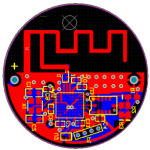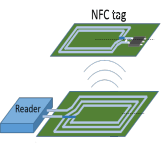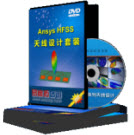什么是全波分析,有人帮助理清一些概念么,谢谢
全波分析 和我们经常听到的,矩量法,有限元法,FDTD 等等方法是并列关系还是包含关系呀?
谢谢啦
全波分析应该就是指包含各种模式的分析,不是指波长。
矩量法,有限元法,FDTD 等都是电磁场数值计算方法,与全波分析不是同一范畴。
那么全波分析是什么范畴?
矩量法,有限元法,FDTD法,又是属于什么范畴呢?
这两种范畴有什么区别和联系呢。
可以再具体讲讲么,不大明白呢。
全波分析是说分析时是不仅考虑主模,还要记及各种高次模,分析电磁场问题的一种方法。
矩量法,有限元法,FDTD法是不同的求解电磁场方程的数值解法。
3楼专家,请问,
是不是全波分析,就是精确的解,
而计算电磁学,是非精确的解呢?
QQ:367108755
加油!不好意思,小弟的水平还是不能榜帮上忙!
按我的理解,全波分析应该是就这个电磁频谱来说的吧,就是计算后可以得到计算参数在整个电磁频谱范围内的特性。
FDTD是时域的,进行傅里叶变换后,就可以得到整个频谱范围。
矩量法是根据积分方程。
有限元法是根据微分方程。
全波仿真呢?请高手针对用cst的全波仿真解释一下啊
按我的理解,FDTD是时域的电磁数值计算方法,经过FFT能够得到所有频谱,经常跟全波分析这个词。
在其它地方找到的解释
Full-wave is best defined by contrast to static and quasi-static methods.
Static means simplifying Maxwell's equations such that there is no coupling at all between E and B fields:
ε div(E)= ρ
curl(B)=µ J
With quasi-static, one form of coupling between B and E is considered: the E field generates conventional current in conductive materials (Ohms Law) and then this conventional current adds to the external J stimulus and generates B in the normal (Biot-Savart) way.
curl(B)=µ(Jexternal+σE)
In both static and quasi-static, the time derivative terms in Maxwell's equations are set to zero. In other words, the displacement current term that Maxwell added to Ampere's Law is set back to zero and Faraday's Law becomes:
curl(E) = -dB/dt = 0
In contrast, full wave solvers consider all the time derivative coupling terms in Maxwell's equations to be finite.
At high frequencies where Faraday's Law and the displacement current are significant, one must invest in the computational expense of a full-wave solver to get accurate results.
Best regards,
-- Colin Warwick
A simple explanation that facilitates the understanding is: full wave analysis is to solve the complete set of Maxwells equations without any simplifying assumptions. Usually the fields described by the equations are time-variant/frequency-dependent. Compared to full wave analysis are some methods such as Quasi-static analysis, where the Maxwell's equations are simplified first(the fields are assumed time-invariant/frequency-independent).
Full-wave analysis is often used to analyze electrically-large structures(physical size is much much larger compared to wavelength), in other words, doing high frequency analysis. Some famous full-wave solvers are: Ansoft HFSS, CST Microwave Studio
Quasi-static analysis is suitable for electrically small structures(usually phsical size is assumed to be less than 1/10 wavelength or 1/6 wavelength or... depends on applications as can be seen from a lot of text books). One of the most famous solver is: Ansoft SpiceLink which is also known as Q2D/Q3D
Hope this helps.
Best regards,
Simple explanation:
Full wave: considering all field components: Ex,Ey,Ez,Hx,Hy,Hz
Quasi static (as example of non full wave one): only one component is considered to be dominant. Imagine you have microstrip line in XY plane --> then Ez component is dominant in substrate region. You omit Ex and Ey and speed up the calculation
Greetz
eirp
感谢您提供的资料,期待您继续分享!
相关文章:
- 广播收听中关于天线的一些基本概念(05-08)
- 天线的基本概念(05-08)
- 天线相位中心几个相关概念的理解,求助(05-08)
- 天线的几个概念(05-08)
- 功率dB的概念(05-08)
- 关于天线的一个概念synthesis是什么意思?(05-08)








